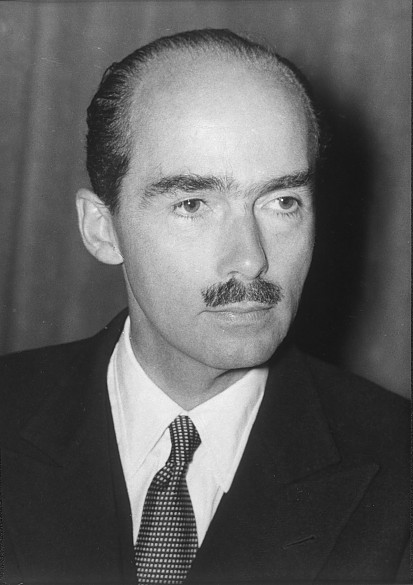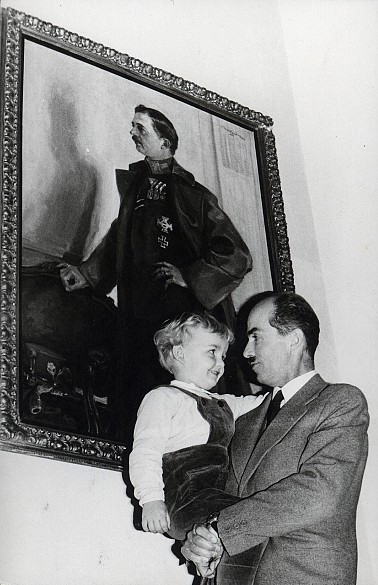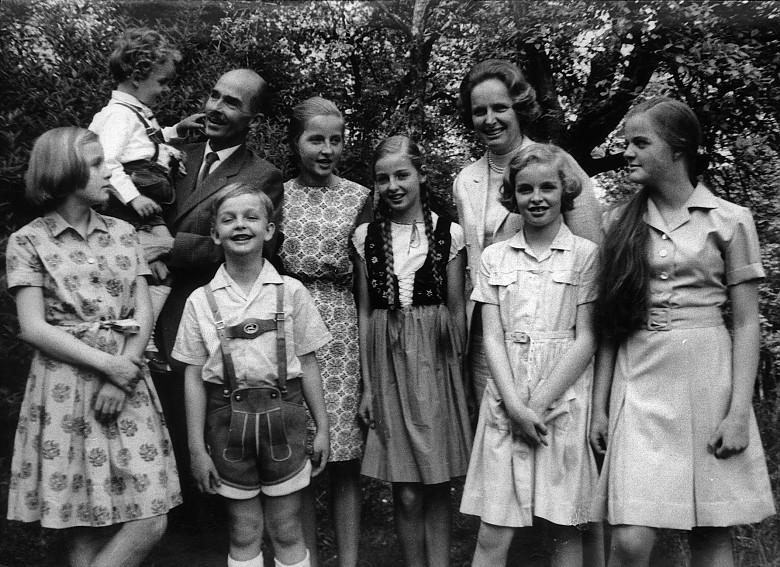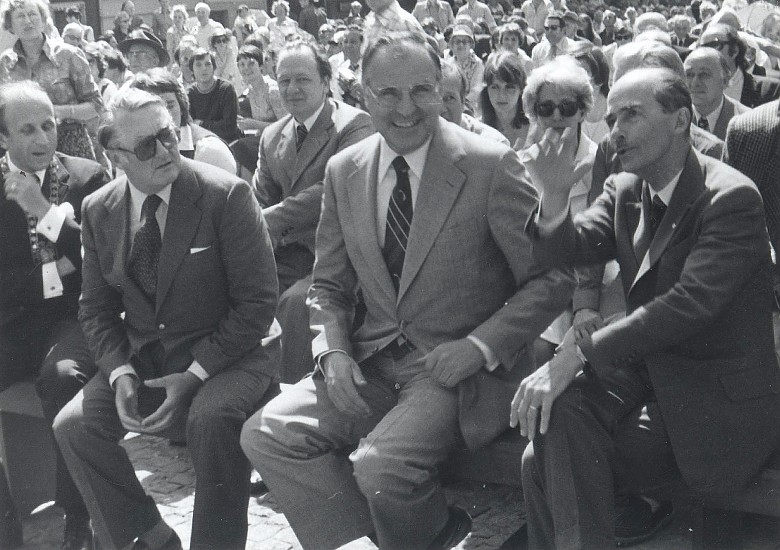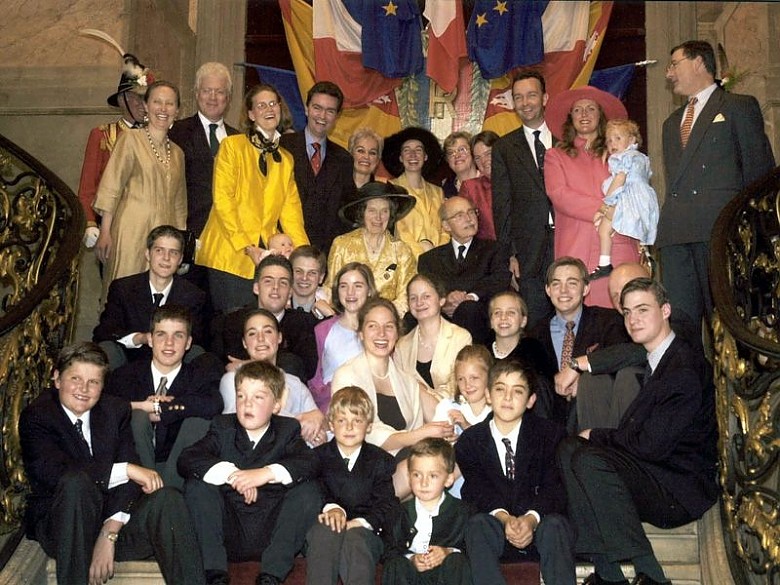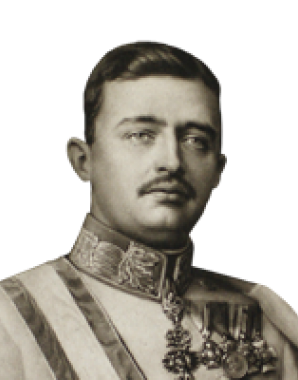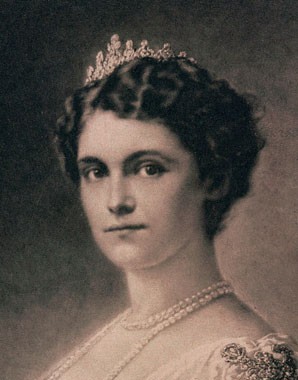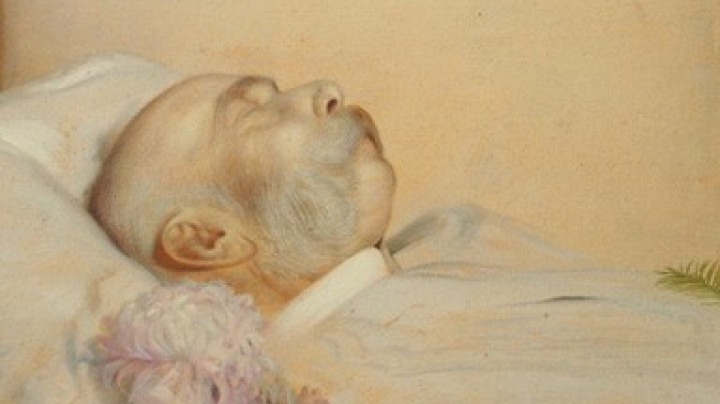Otto’s path from ‘last crown prince’ to European politician
Born at the Villa Wartholz in Reichenau an der Rax (Lower Austria) on 20 November 1912, Otto was the first child of the designated heir to the throne Archduke Karl and his wife Zita. As the future crown prince he was the focus of much attention.
At the funeral of his great-great-uncle Emperor Franz Joseph in November 1916 the four-year-old Otto walked behind the catafalque dressed in white, positioning him as the hope of the dynasty in the public eye.
After the death of his father Karl Otto was brought up by his mother Zita as the pretender to the Habsburg throne. He was given a solid education and upbringing in keeping with dynastic tradition. On 20 November 1930 he attained legal majority and took his place as head of the dynasty.
Following a doctorate in jurisprudence at the Belgian University of Leuven in 1935, Otto went into journalism, but his political work as an outspoken opponent of National Socialism and Communism came increasingly to the fore. However, his lack of qualms about rubbing shoulders with Fascist or conservative-Catholic authoritarian regimes such as the Austrian Corporative State or the Franco regime in Spain, is today seen in a critical light.
During the 1930s Otto stylized himself as the leading figure of an independent Catholic Austria, offering to return from exile to Austria and take over the government as a demonstrative sign against the threat of annexation of Austria by Nazi Germany, an offer that was made redundant by the Anschluss of 1938.
During the Second World War Otto continued to work as a journalist and became the figurehead of Austrian resistance in the West for the conservative Catholic camp. His attempts to gain political influence in Austria immediately after the war failed. Otto continued his political activity in Western Europe, where he fought for a free Europe of Western and Christian values and in particular protested against the disappearance of Eastern Central Europe behind the Iron Curtain.
Otto worked mainly for the Paneuropa movement, becoming its president from 1957 to 1973. Afterwards he followed the founder Count Richard Nikolaus von Coudenhove-Kalergi as president of the International Paneuropa Union until 2004. In recognition of his achievements he was appointed honorary president of the Union following the end of his active career.
In 1951 Otto Habsburg-Lothringen married Princess Regina von Sachsen-Meiningen. The marriage resulted in seven children, five daughters and two sons, including Karl (b. 1961), the present head of the family.
In 1954 Otto took up residence at the Villa Austria in the Bavarian village of Pöcking on Lake Starnberg. He then became intensively involved in politics in West Germany, working for the Bavarian CSU (Christian-Social Union). After becoming a German citizen in 1978, from 1979 he represented the CDU (Christian Democratic Union) as a member of the European Parliament in Strasbourg.
In 1961 Otto signed a declaration confirming his withdrawal from the House of Austria and the associated waiving of any rights to the throne. Nonetheless, a serious controversy known as the Habsburg Crisis flared up around him in Austria, leading to a massive crisis of confidence between the leading political parties, the ÖVP (Austrian People’s Party) and the SPÖ (Austrian Socialist Party).
In August 1989 Otto helped to organize the Pan European Picnic on the Austrian-Hungarian border, one of the events that subsequently led to the fall of the Iron Curtain.
In 1999 he resigned from all political offices but continued to write and publish. As an elder statesman and important witness to his times, he was an interesting and much sought-after partner for discussion. However, from time to time he stirred up controversy with contentious statements.
Otto Habsburg-Lothringen died in Pöcking at the age of 98, surrounded by his family, on 4 July 2011. He was interred in the Imperial Crypt on 16 July 2011. Huge crowds flocked to witness the event. As a symbol of his close association with Hungary his heart was interred in the Benedictine Abbey of Pannonhalma in Hungary.
